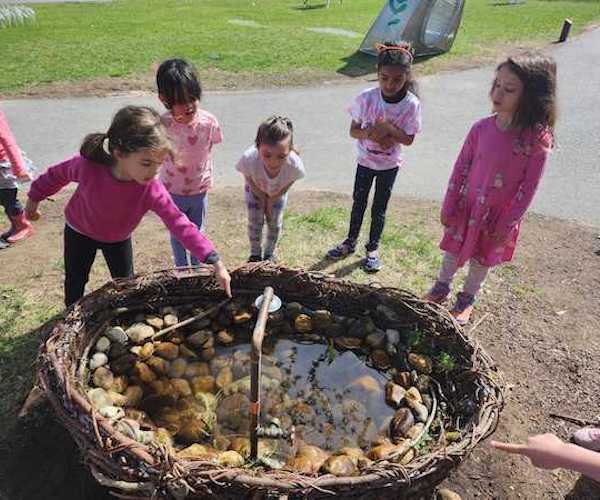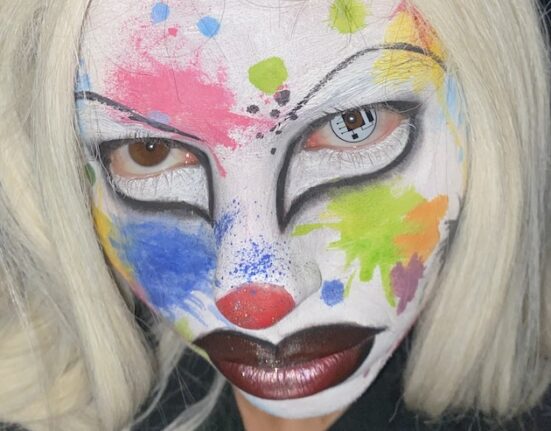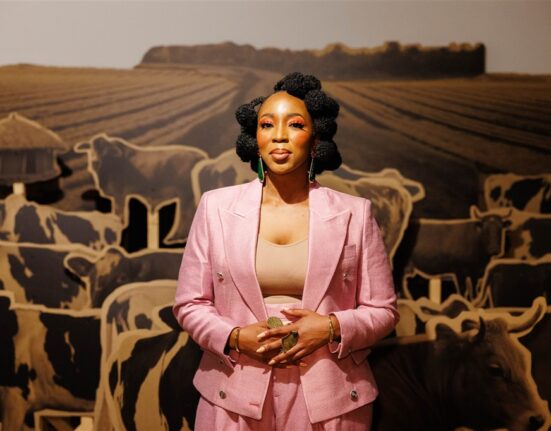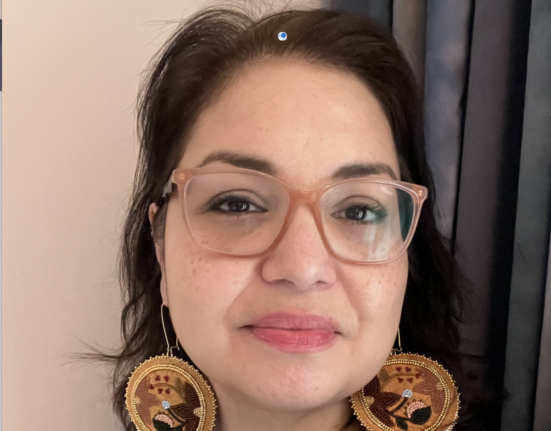By Lisa Reindorf
Fostering collaboration between artists and scientists is a wonderful educational and creative endeavor. Kudos to the Umbrella Arts Center for taking on such a complex and ambitious project.
TAPPED IN: Moving Hearts and Minds Through Art and Science, presented by The Umbrella Arts Center, Concord, MA, through June 8
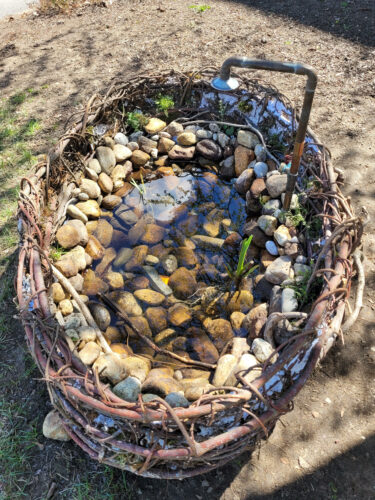
John Sterman/ Raquel Fornasaro’s Regenerate. Photo: Stewart Ikeda
How do we deal with the myriad issues that contribute to climate change? There are so many aspects to the far-flung crisis — air pollution, global warming, food production, sea-level rise, urban development, fires and storms — the list seems endless. The wide-ranging TAPPED IN attempts to address a number of tipping points in one sprawling exhibition, bringing together 10 artist/scientist pairs to offer incisive perspectives.
As a climate change artist myself, I found the artist/scientist collaboration to be a wonderful and enterprising idea. Artists and scientists are both trained in inquiry and questioning; noncurious scientists or artists are real rarities. At this time there are creative people who are interested in transforming scientific knowledge into digestible, compelling scenes of human experience. And scientists have valuable things to learn from artists: how to go beyond abstract results by “tapping into using new ways of visualizing and communicating vital information,” in this case about our endangered environment.
According to the show’s curators, their intent was to pair scientists and artists who would come up with messages about climate crisis matters that demanded to be amplified — and discussed — at this time. It turned out that, at least in this team-up, experience won out: artists whose previous body of work had dealt with environmental issues over many years produced the most interesting and meaningful exchanges with scientists.
The most striking work here, the result of the pairing of artist Raquel Fornasaro and academic John Sterman, director of the MIT Sloan Sustainability Initiative, inspired the show’s title. Born in Brazil, Fornasaro’s artistic practice has routinely probed the fraught relationship between urban development and the environment. Sterman is the originator of the Carbon Bathtub, a visual analog for understanding climate change dynamics. To summarize the visual concept: A faucet pours water (greenhouse gases) into the bathtub (the atmosphere). There is also a drain (natural processes or human interventions) that is removing the water. Currently, human activities are putting more into the bathtub than the drain can handle, thus overflowing the bathtub (our environment).
The Sterman/Fornasaro collaboration is an outdoor installation called Regenerate and it showcases a “Climate Bathtub Simulation.” A natural bathtub is crafted from tree branches, used plastic gloves, and recycled paper embedded with seeds. This work embodies earth’s systems, focusing on the opportunities for regenerative transformation once the “tap” of wasteful products is closed. As the wind disperses the seeds, viewers are invited to witness the potential for regrowth and restoration. This is a beautiful work that not only adds to our understanding of climate change dynamics, but suggests the value of natural, rather than technological, solutions.

A view of the TAPPED IN exhibition. Photo: Lisa Reindorf
Another work, The Plastic Wave is the result of the pairing of artist Lisa Barthelson and Juliana Birnbaum, program director of Project Regeneration. This piece is constructed out of cast-off plastic collected by residents of Concord, Massachusetts. The intent of the work is to raise awareness of the overwhelming tides of plastic — which is not biodegradable — that are threatening the world’s climate, ecosystems, and health. Involving community residents in the process sets up a collective model of engagement, dramatizing the issue of plastic overuse and repurposing.
One of the most striking aspects of the exhibition is the way in which artists and scientists alike use their respective mediums to explore and interpret complicated concepts. For example, a painting may depict the beauty of the natural world, while a scientific diagram or description may illustrate the underlying principles that govern the behavior of the environment. In both cases, the goal is the same: to convey a deeper truth about natural processes and ecological systems, and to show how our actions affect them.
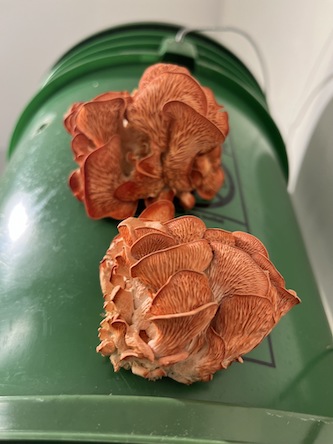
A view of Mags Harries/Nadia Szeinbaum’s Under Our Feet. Photo: Stewart Ikeda
This dovetailing of art and science is well demonstrated by the inspired pairing of artist Ilana Manolson and Janine Benyus of the Biomimicry Institute. Manolson was originally trained as a botanist; her art depicts evolving patterns in nature. She has a particular skill for painting water environments. Three stunning floor-to-ceiling paintings depict the world of mangroves, fungi, and meadows of milkweed. Benyus has described biomimicry as “the bridge between biology and design, advancing the adoption of nature-inspired strategies to help solve the most pressing problems of our time.” Manolson’s paintings and Benyus’s research both look to nature as a vital source of inspiration and understanding: these works examine plants found in our environment whose distinctive capabilities can help us design a better world. Mangroves operate as sponges for floods and fungi perform many functions, including as a food source.
The concept of using fungi as a substitute for meat is explored in Under Our Feet, a work from the team of artist Mags Harries and Nadia Szeinbaum, senior scientist at Beyond Meat. The production of meat is an enormous driver of climate change for a number of reasons, land use, consumption resources, and methane emissions among them. Beyond Meat turns mycelium into meat products, avoiding the costly climate impact of animal production. All the company’s products can either be consumed or returned to the ground as biodegradable waste, an effective solution to environmental problems.
Harries visited the Beyond Meat facilities and then imagined herself as a scientist, setting up the conditions for an experiment. The result: a sculpture tower made up of buckets that contain living mushrooms in different stages of development. Drawings on the wall around the work were created by placing mushrooms on paper and letting the spores make prints, which turn out to be wonderful organic art.
In the age of the Anthropocene, we need to come up with innovative and imaginative ways to solve what will be increasingly difficult climate challenges. Collaborations between artists and scientists will benefit both disciplines in this regard: working together, they will be able to explore new ideas, communicate abstruse concepts, and develop creative solutions to some of our pressing environmental problems. Kudos to The Umbrella Arts Center for TAPPED IN — an ambitious project that suggests some marvelous possibilities.
Lisa Reindorf is an architect and artist whose work deals with climate change. She lectures frequently at art and environmental conferences, and is also an arts writer for such publications as Hyperallergic and Miami New Times.

